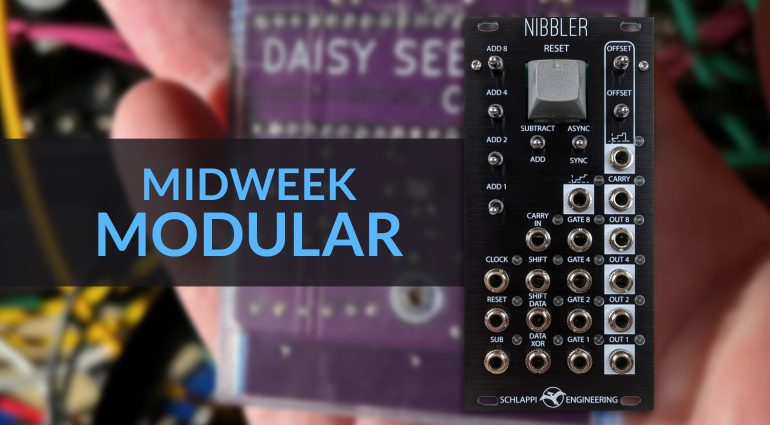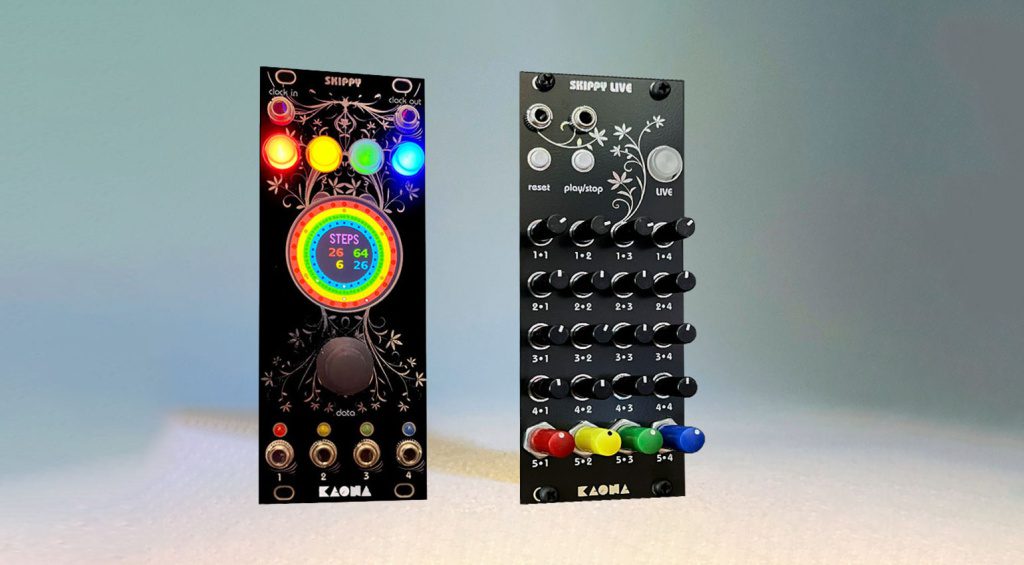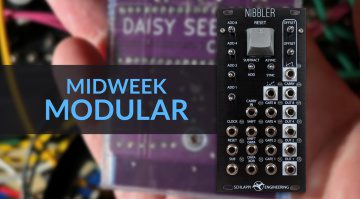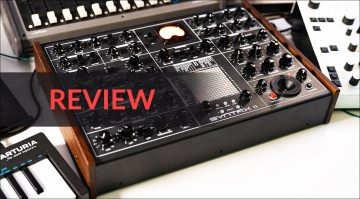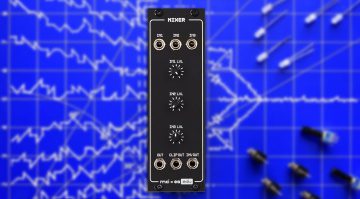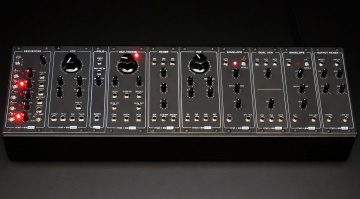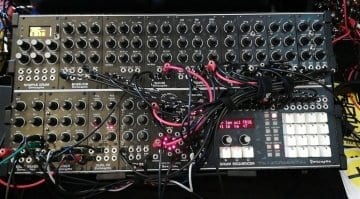Midweek Modular: DIY Hats, Nibbles and Daisy Seeds
This week in Midweek Modular we learn how to build a HiHat module, try to fathom bit accumulation, and plug a Daisy Seed into an FX Boy. Oh, and Skippy gets some knobs.
Midweek Modular
In the winter wonderland of the supermarket Christmas aisle, these are the choice bits of premium tinsel.
Erica Synths DIY HiHats
Continuing the line in educationally-focused DIY kits comes the mki x es.edu do-it-yourself HiHats. HiHats is based on the classic Roland TR-808 sound of somehow managing to bend noise into a harmonically challenged percussive hit.
HiHats adds some useful controls to the front panel along with patch sockets for modulation. Centre stage is taken by the hefty tuning knob, and then you have controls for Tone and Decay. An Accent input alongside the Trigger input gives some added oompf to the sound at opportune moments.
The build is all laid out in a video from the circuit designer Moritz Klein. It will take you through the electronics, help you build it out on a breadboard and ultimately solder together a fully working (hopefully) HiHats module.
You are currently viewing a placeholder content from YouTube. To access the actual content, click the button below. Please note that doing so will share data with third-party providers.
Schlappi Engineering Nibbler
I first saw this at Superbooth, and I wasn’t sure what it was then, and I don’t think I’m any wiser now. But I’m enjoying the name, and I’m intrigued by the nice fat clacky key that’s centred on the front panel. Schlappi makes impressively deep modules, so let’s see if we can tease out Nibbler’s function.
Nibbler is, of course, a CMOS Four-Bit Digital Accumulator. So at a basic level, it counts from zero to 15. It uses this binary accumulation to produce gate outputs and stepped voltage outputs that can be used for rhythms and melodies or modulation. You’ve got some maths built-in for variation, some phase shifting and register shifting.
The idea is to explore the musicality of binary counting and to employ the outputs through your rack. The video below is very enlightening and opens a window on an otherwise impenetrable couple of paragraphs.
You are currently viewing a placeholder content from YouTube. To access the actual content, click the button below. Please note that doing so will share data with third-party providers.

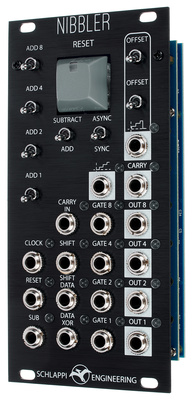
Daisy Seed for FX Boy
When Befaco released the FX Boy effects cartridge module, they opened it up for users to design their own cartridges. One of the first to emerge is the superbly competent Daisy Seed from fckwfpv.
It’s not actually an effect in itself; this cartridge houses the Electrosmith Daisy Seed-embedded DSP platform. It’s a platform in which you can program all sorts of effects and possibilities. So, in many ways, fckwfpv is opening up the open-source nature of the FX Boy for people who prefer to code rather than get their hands dirty with DIY circuit building.
You are currently viewing a placeholder content from YouTube. To access the actual content, click the button below. Please note that doing so will share data with third-party providers.
At the moment, he’s produced a firmware called “Pitch Buddy”, which contains a pitch-shifting and reverb effect. Potentially, it could be anything you can imagine in code. Fckwfpv says that he might make the PCB Gerber files and a BOM available so people can make their own, along with the STL files to 3D-print the enclosure.
- Fckwfpv Instagram.

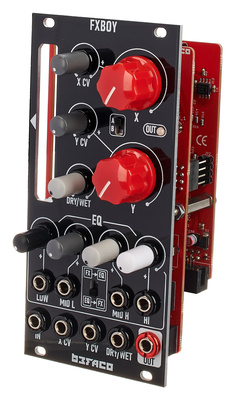
Skippy Live
As a bonus this week, I wanted to point out the Skippy Live expansion for the fascinating Skippy module from Kaona. Skippy is a 4-track polyrhythmic sequencer based around a beautiful circular screen. It’s full of algorithms for pattern generation, features a joystick for parameter editing, and a row of four buttons. There are a tonne of interesting things inside that you can only access one at a time via the joystick/screen interface – the expander hopes to remedy this.
Skippy Live introduces a matrix of 16 knobs to deal with layers of parameters. You can allocate a row of knobs to any of the 10 internal functions. So you can have a row handling Choas and another Probability, Swing or first steps. Another row of 4 knobs offers direct algorithm selection for the 4 tracks. You’ve also got some transport and reset controls with CV inputs.
It’s a brilliant way to make Skippy more accessible and instant in a live performance. Great job.

 2,5 / 5,0 |
2,5 / 5,0 | 